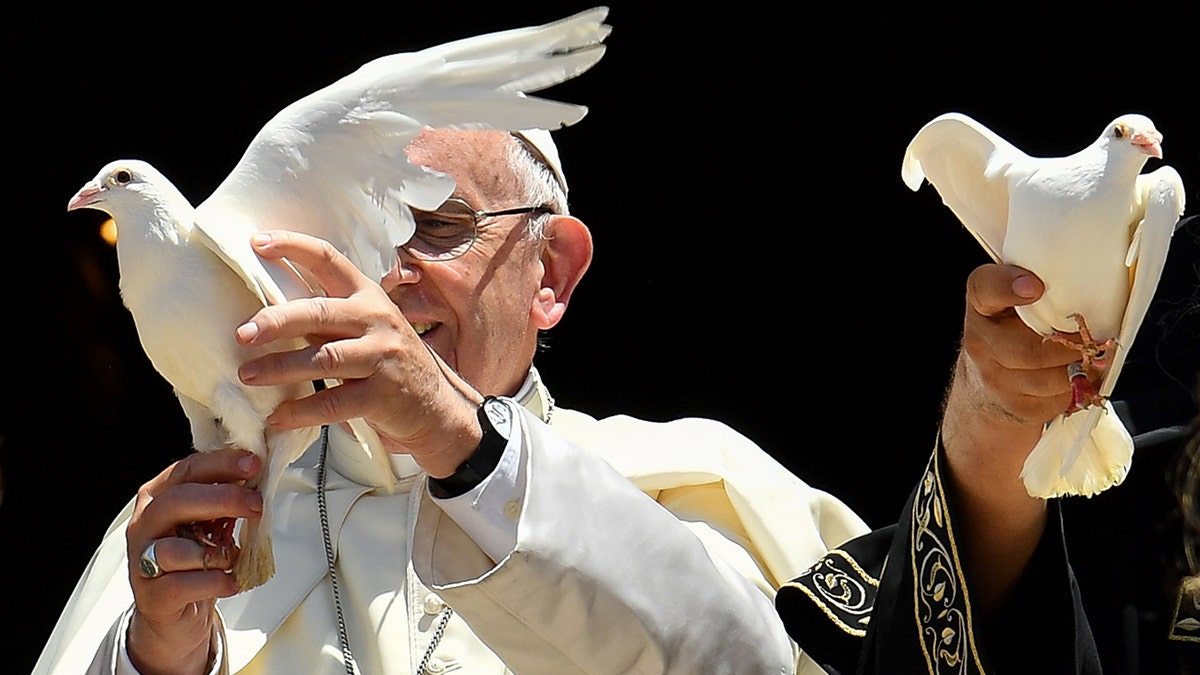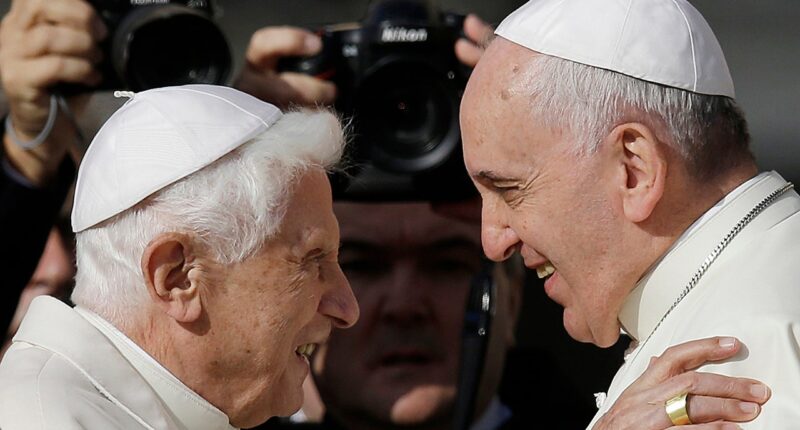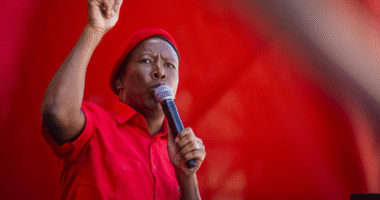Once a new pope is voted in, the name he chooses could signal the direction the Catholic Church moves in the coming years.
The balcony of St. Peter’s Basilica is where the announcement “Habemus Papa,” which means “We have a pope,” is traditionally made. Following this announcement, the pontiff’s baptismal name in Latin is revealed, along with the papal name he has chosen and the meaning behind it.
If the newly elected pope decides to adopt the name Pope Francis II, it might be seen as a sign of continuity with the previous pontiff’s pastoral heritage. However, Pope Francis himself humorously mentioned that his successor could be named John XXIV, in homage to the pope from the Vatican II era.
Throughout the 20th century, the name Pius was the most popular choice among popes. Opting for this name could indicate that a conservative or traditionalist figure is ascending to the papal throne at St. Peter’s Basilica.

Pope Francis releases a dove after a meeting with other religious leaders at the Pontifical Basilica of St Nicholas in Bari in the Apulia region in southern Italy on July 7, 2018. (Alberto Pizzoli/AFP via Getty Images)
Benedict, who was elected in 2005, was chosen because he wanted to pay homage to Benedict XV, who led the Catholic Church during World War I and dedicated himself to healing the rifts of war.
John Paul chose his name, signaling a commitment to reforms, including the sidelining of the Latin Mass in favor of local languages and other faiths, most significantly Judaism.
But it is still a new pope’s choice to choose a name never used before.
“This would open a new season and could mean that his program is not in line with any of his predecessors, so an even more personalized program,” Regoli said.
Imperatori-Lee suggested another name that might signal a continuation of Francis’ legacy: Ignatius, for the founder of Francis’ Jesuit order.
“It would be interesting,” she said. “We’ve never had one of those.”
The Associated Press contributed to this report.

















